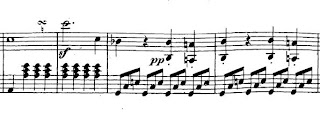Philosophy of Music Education - Christopher Grapis
I define my philosophy of music education in terms of how the student will benefit from the invaluable and universal language of music. A student will receive benefits from physical, social, emotional, and mental development through the process of learning and applying musical language.
Music education offers students the development of fine motor skills through the precision of manipulating the body to sing specific pitches with specific tone, articulate specific diction, strike specific parts of the instrument, and finger over specific tone holes, valves, and slides. Where some students fail to find safety and comfort at home or in other areas of school, music contains calming physiological components, no matter what proficiency level the student may be. Music provides a direction and a loving family to a plethora of otherwise lost persons, absent in the majority of harsh academia.
Socially, young musicians will develop necessary teamwork and communication when learning from each other when playing and singing in large and chamber ensembles. They will develop sincere empathy and fierce connectedness through striving for a common goal. Students will be placed into leadership roles to lead their peers in developing and exhibiting confidence in performance, accountability in preparation of pieces, organization in planning practice sessions, sectionals, and rehearsals, and responsibility in having the proper materials necessary for participation. The discipline required to balance and maintain these life-skill properties parallels or surpasses any other activity.
Students will be able to develop an intense emotional experience not only working as a team for a common goal, but also through defining themselves at the most crucial developmental stages of their life, where non-artists often go their entire lives without finding themselves in this way. As the great philosopher Plato said, “Music purifies the soul.” Young artists must experience complex creativity through the highly personal opportunities to improvise as soloists their own melodies, harmonies, variations, and accompaniment to others. Musicians, through the careful study of music theory, learn to compose music that they can connect to and call their very own, something that instills great pride in themselves and their work.
Academically, students with a background in music receive a rich cultural education in terms of performing, studying, and identifying diverse repertoire from all areas of the world. In the study of music history, music is related to the history of all art forms and also the history of world events, as they are all inseparable due to their mutually profound influence. The aural analysis of listening to excellent music develops both the analytical left hemisphere of the brain, extracting individual elements of experience, and the creative right hemisphere of the brain, identifying aspects as part of the whole, and drawing parallels to other knowledge and the reception of emotional communication. Abstract and analytical critical thinking are developed to study the music theory of a written piece, priceless skills to have in any profession. Studying music theory bears all of the benefits studying a new language, because musical notation is its own dynamic language.
Finally, aside from the countless physical, social, emotional, and mental developments that musicians experience, music holds one final aspect rare in most activities: students can always become more outstanding musicians, regardless of age or life situation. They never stop learning, networking, and becoming more aware of their enriched experience wherever they may go.















